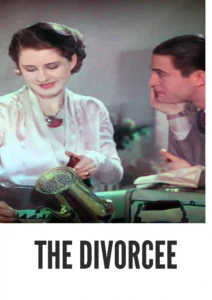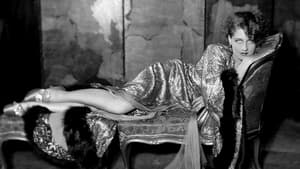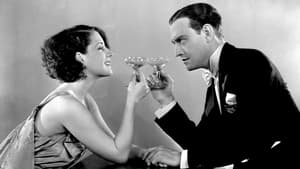Video Sources 0 Views

Synopsis
The Divorcee (1930) Colorized: Norma Shearer’s Oscar-Winning Performance – Now in Color!

Experience the sophistication and drama of The Divorcee (1930) like never before! This newly colorized HD version stars Norma Shearer in her Academy Award-winning role as a woman navigating love, marriage, and infidelity in the roaring twenties.
The Divorcee (1930) Movie Storyline: Love, Betrayal, and Freedom in the Roaring Twenties
The Divorcee tells the story of Jerry Martin (Norma Shearer), a modern and independent woman in the 1920s who believes in open marriage and equality within her relationship with her husband, Ted (Chester Morris) .When Jerry discovers that Ted has had an affair, her world is shattered . Initially devastated, Jerry decides to embrace the same freedom she had granted Ted, embarking on her own journey of self-discovery and sexual exploration . The film explores themes of love, betrayal, forgiveness, and the changing roles of women in a rapidly evolving society .
Cast of The Divorcee (1930): Norma Shearer Leads a Talented Ensemble
- Norma Shearer as Jerry Martin
- Chester Morris as Ted Martin
- Conrad Nagel as Paul
- Robert Montgomery as Neale
- Florence Eldridge as Helen
Genre and Themes: A Pre-Code Drama Challenging Societal Norms
The Divorcee is a pre-Code drama that explores themes of marriage, infidelity, female independence, and sexual freedom . The film’s frank and open discussion of these topics made it controversial for its time, but also contributed to its enduring appeal .
The Divorcee (1930): Shearer’s Triumph in a Changing Hollywood
Released in 1930, The Divorcee was a critical and commercial success, earning Norma Shearer the Academy Award for Best Actress . The film solidified her position as one of Hollywood’s leading actresses and is considered a prime example of the daring and socially conscious storytelling that characterized the pre-Code era .
The Colorization Process: Capturing the Glamour and Intimacy of a Bygone Era
This colorized version of The Divorcee (1930) was carefully created by [Your Company Name], a team dedicated to preserving and revitalizing classic films.Our Process:
- AI-Powered Color Palette Generation: We started with a high-resolution scan of the original film. Sophisticated AI algorithms then analyzed the grayscale tones, generating realistic color palettes.
- Careful Attention to Historical Detail: We researched styles and settings to best capture the feel and nuances of the era.
- Artistic Refinement: Finally, skilled artists meticulously went through each scene, to enhance emotional resonance.
Technical Details: Download The Divorcee (1930) in Colorized HD
- Original Release: 1930
- Director: Robert Z. Leonard
- Starring: Norma Shearer, Chester Morris, Conrad Nagel
- Runtime: Approx. 84 minutes
- Language: English
- Download Format: MP4
- Resolution: HD (1080p)
- Compatibility: Compatible with modern devices
- Audio: Restored and enhanced soundtrack
Why Watch the Colorized Version of The Divorcee (1930)?
See this winner for best actress in a whole new way! The colorization adds new emotionality to this daring film for the pre-code era.
Download The Divorcee (1930) Colorized in HD Today!
FAQs
Q: What is The Divorcee (1930) about?
A: A woman has to choose between different forms of love, after she discovers her husband’s infidelity.
Q: What makes this film important?
A: It is a watershed pre-Code film that won Norma Shearer an Oscar for Best Actress.
Q: What are Pre-Code films?
A: Pre-Code films were made before the film industry started censoring work beginning in 1934.













